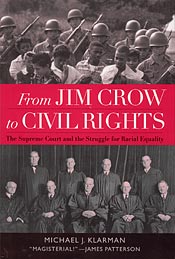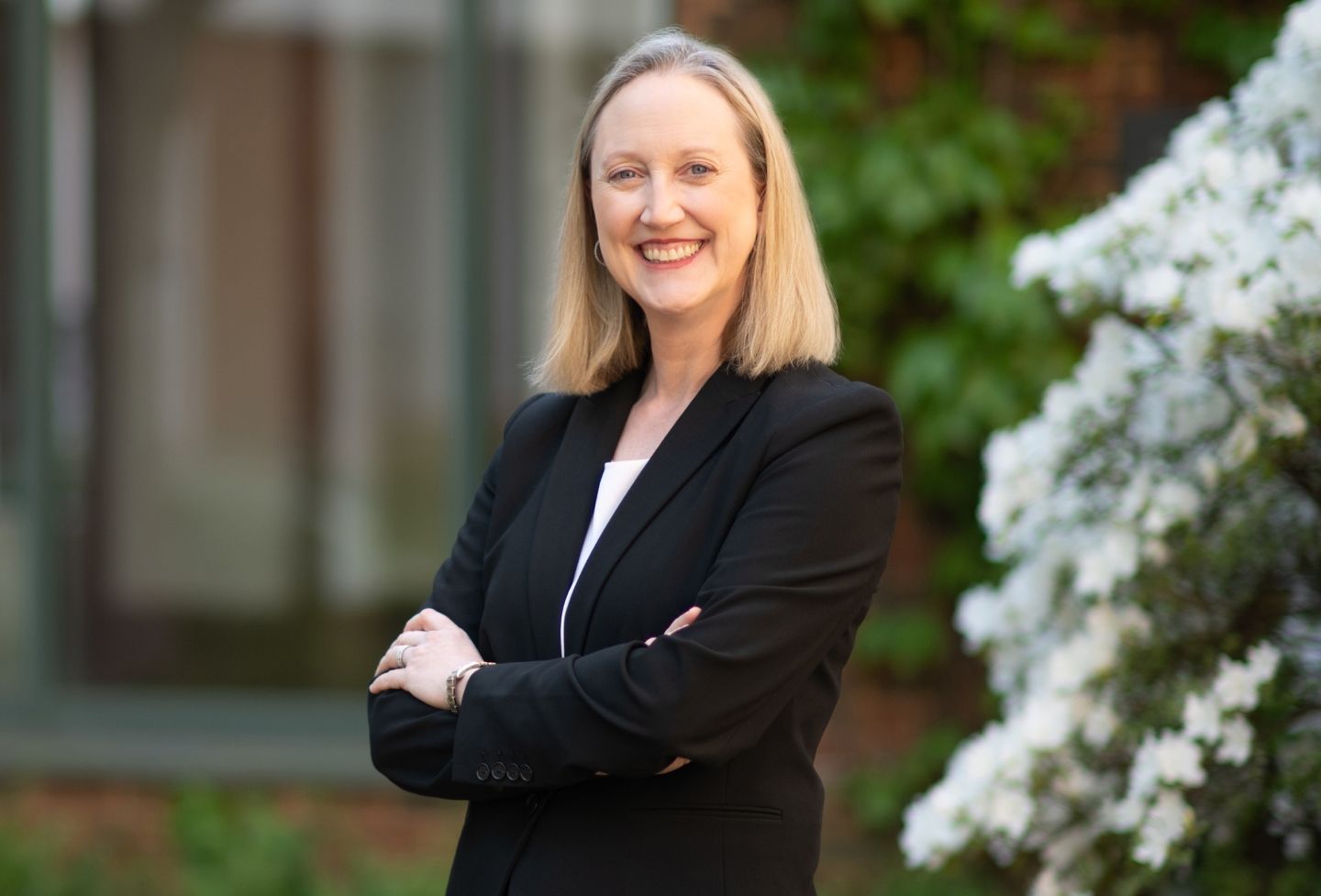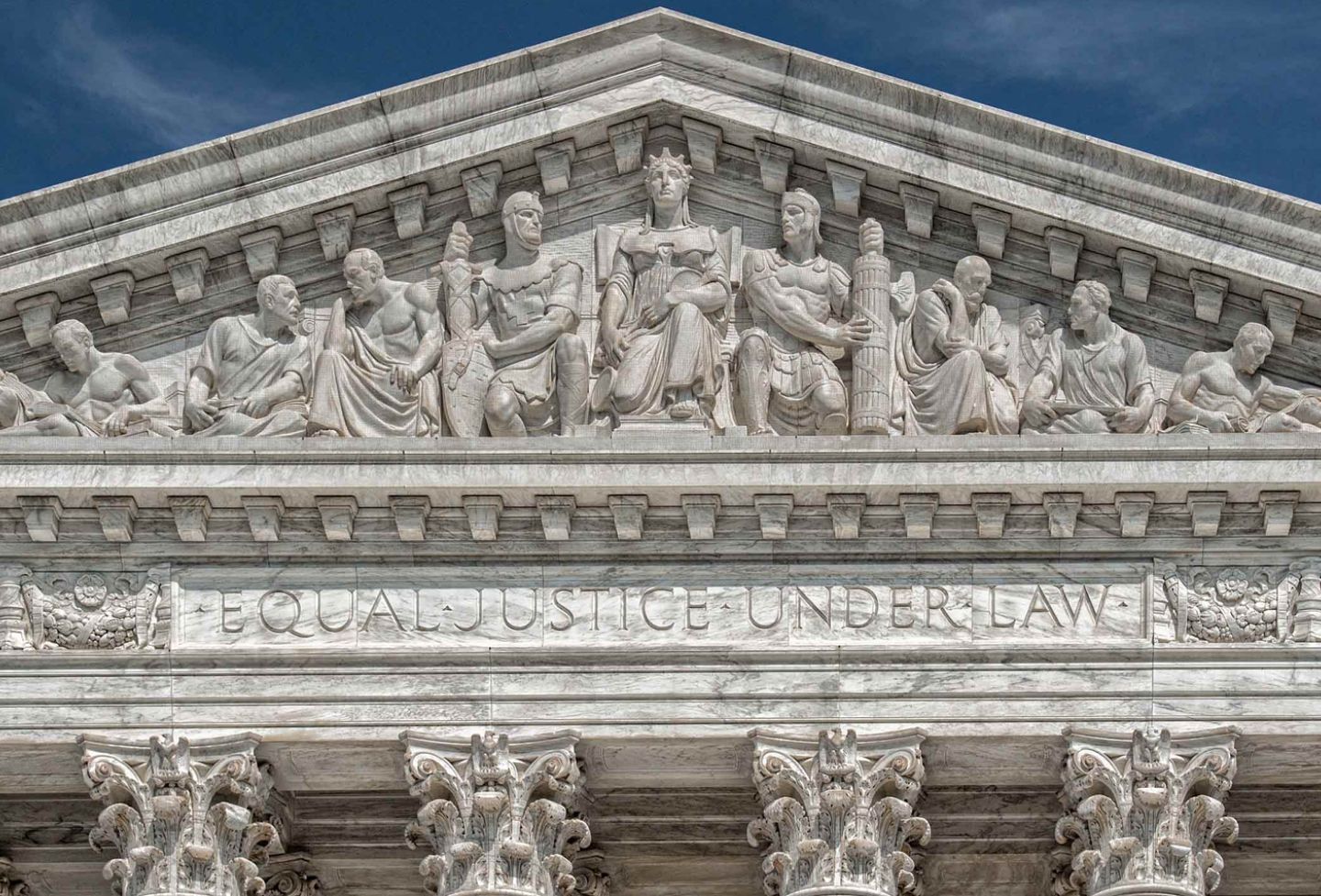Klarman's Book Details Role of Supreme Court in Ending Segregation


It's now conventional wisdom that Brown vs. Board of Education, the 1954 Supreme Court decision that demolished the legal basis for segregated schools, is the Court's most important ruling of the 20th century. But the Justices who made the ruling weren't so confident they'd done the right thing, and the matter of exactly why it is so important is also disputed. In a new definitive history of the Court's role in healing America's long-running race wound, constitutional law scholar Michael J. Klarman has told the saga in vivid detail and resolved the theorizing over Brown's significance. In From Jim Crow to Civil Rights: The Supreme Court and the Struggle for Racial Equality, published in January by Oxford University Press, Klarman shows that Brown did not launch the Civil Rights Movement; instead it stirred a backlash that exposed the violent nature of Jim Crow and thus led to the landmark civil rights legislation of the 1960s.
"Race is the dominant issue in American constitutional history, from Dred Scott on through the post-Civil War amendments, Plessy v. Ferguson, which established the notion of separate but equal, and Brown," Klarman said. "You could make the case that W.E.B. Du Bois was right in 1903 when he said that race — the problem of the color line — is the dominant national issue of the 20th Century."
"In the book, I'm reacting against a view that strikes me as both prevalent and misguided, namely the legal-centric view that Brown created the Civil Rights Movement," he said. Klarman considers World War II to be the real catalytic event for the Civil Rights Movement. Black soldiers who risked their lives on battlefields in World War II, a war fought to crush the racist ideology of Nazism, were determined that America should live up to its democratic creed. Recognizing the potential of black political power, Truman integrated the armed forces in 1948, following the lead of the Brooklyn Dodgers who integrated baseball by signing Jackie Robinson in 1947. The racial climate had shifted. But was it enough to end segregated schools?
"The legal challenge to the notion of separate-but-equal was brought by NAACP lawyers headed by Thurgood Marshall. If separate-but-unequal could be proven, then segregation laws based on Plessy would in fact be in violation of the 14th Amendment and its equal protection clause." In 1950, in the case of Sweatt v. Painter, they succeeded in denting segregation's armor when the Supreme Court ruled that separate law school facilities were "not substantially equal." Complete victory came with Brown on May 17, 1954, in a ruling that covered five similar cases from Kansas, Delaware, South Carolina, Virginia, and the District of Columbia, when the Supreme Court unanimously invalidated racial segregation in public schools. A year later in Brown II the court temporized about how fast the change had to happen. Gradualism had been a condition set by some justices for getting a unanimous decision in the first ruling. Polling showed that the nation as a whole preferred a gradual approach.
"Brown is contrary to precedent and the original understanding of the 14th Amendment," Klarman said. "Several of the justices thought it was hard to say that the ruling was right as a legal matter. I went through a period in which I tried to figure out myself why the decision was right." Klarman first investigated the question of how to justify Brown as a legal decision in a Virginia Law Review article in 1991; he concluded that the widespread exclusion of blacks from southern politics might have justified the Court's intervening to strike down school segregation. A second VLR article in 1994 developed his thesis about the ruling's backlash effects, and he resolved on writing the book. "I thought it would be useful to write a general history that looked at the constitutional history of race discrimination systematically."
Klarman said the staggering amount of primary and secondary sources on the history of race discrimination in the 20th century meant that he had enormous amounts of research to do. Besides the academic literature on race relations, economic and political history, the NAACP records, and the papers of the Supreme Court justices, Klarman digested such sources as the Southern School News, a voluminous monthly report on desegregation efforts that was published for 15 years and was a treasure trove of information.
Three years ago he became aware of the rapid approach of the 50th anniversary of Brown. The realities of the publishing industry meant if his book were to appear by the anniversary, it would have to be finished at least a year in advance.
"I'm really pleased that I'm done. I've been fixated on this project for at least the last six years, putting in more 80-hour weeks than I care to recall," said Klarman, who joined the Virginia faculty in 1987. He is now the James Monroe Distinguished Professor of Law, the Albert C. Tate, Jr. Research Professor, and Professor of History. Known as a superb teacher and for his booming lecture voice, he has earned a State Council of Higher Education Faculty Award and U.Va.'s All-University Teaching Award.
"Brown forced people to take a position on school desegregation, which many of them had not done before," he said. Moderate southern politicians could not be moderate on desegregation without losing their jobs. Northern politicians voiced support for Brown but were unwilling to take genuine steps to enforce it. Whites generally made up their minds "without taking instruction from the justices." Polls revealed no large attitude shift as a result of Brown; a 5 percent increase in support of the ruling seen in 1959 could have been influenced by extra-legal forces, Klarman said.
Still, "Brown was of enormous symbolic importance for African-Americans," because it convinced them change was possible. "There's no doubt that Brown facilitated black protests." In the 1950s, just signing a petition to desegregate schools in the Deep South was an extraordinary act of courage. "Brown clearly prompted southern blacks to challenge Jim Crow more aggressively" than they might have otherwise done, Klarman said.
However, the evidence that Brown acted as a "spiritual father" for direct-action protest such as sit-in demonstrations is weak, and in the short term the decision may have discouraged such protest by promoting litigation. "After the NAACP's inspiring victory, perhaps most blacks were inclined to see in the short term what litigation could deliver," he said. In the long-term, Brown may have encouraged direct-action protests, as southern whites engaged in massive resistance to school desegregation, dashing the hopes raised by Brown.
Following Brown, hundreds of NAACP branches closed in the 1950s because of the backlash caused by the ruling; some NAACP lawyers had their homes firebombed. Other organizations like the Southern Christian Leadership Conference sprang up to fill the gap. In addition, "Brown may have directly fostered violence against southern blacks." Southern politicians indirectly encouraged such violence. Birmingham police commissioner Bull Connor unleashed police dogs and fire hoses against peaceful black protestors. Connor had actually been pushed out of office in the early 1950s by civil and political leaders who regarded him as an embarrassment because of his racial extremism. After his ouster, the city had made progress on race, including building the first hospital for blacks and desegregating elevators in downtown office buildings. Connor made a political comeback after Brown, and civil rights leaders picked Birmingham as the site for their demonstrations because they suspected the commissioner would overreact.
George Wallace similarly became a "die-hard segregationist" after Brown and won the governorship in 1962 on a promise to stand in the schoolhouse door to block integration. After impeding desegregation in grade schools across the state in September 1963, Wallace backed down when he was threatened with judicial contempt orders, but soon after a black church was bombed, killing four teenage girls, and Wallace received much of the blame.
Brown brought "to the surface the violence that always lay at the core of white supremacy," Klarman said. "Brown was less directly responsible for putting protestors on the street than is commonly assumed and more directly responsible for the violent reception they suffered." That violence, vividly communicated to national television audiences, profoundly influenced northern opinion on race.
The moral is that "if the court pushes on an issue where public resistance is greatest, that creates a backlash and possibly even a retrogression," he said, adding that a comparison can be drawn between Brown and the recent Massachusetts decision on same-sex marriage. When courts get ahead of public opinion, Klarman said, they rally opposition, undermine moderates, and sometimes retard the causes they purport to advance. And while the violent southern backlash produced by Brown generated a counter-backlash in northern opinion, it is unlikely that gays and lesbians will face pervasive violence of the kind that outrages moderates and turns the tide of public opinion once and for all.
Founded in 1819, the University of Virginia School of Law is the second-oldest continuously operating law school in the nation. Consistently ranked among the top law schools, Virginia is a world-renowned training ground for distinguished lawyers and public servants, instilling in them a commitment to leadership, integrity and community service.


